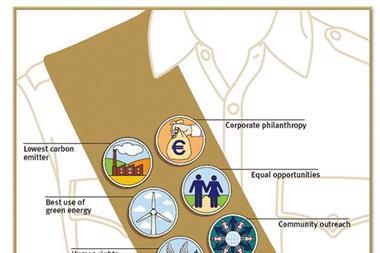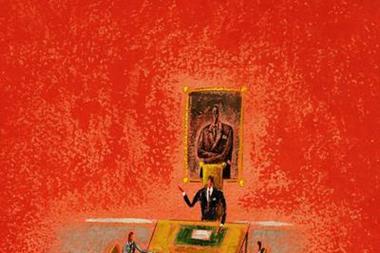The SEC claimed Goldman Sachs misstated key facts about a product tied to subprime mortgages, which cost investors $1bn
The Securities and Exchange Commission charged Goldman Sachs including one of its vice presidents for defrauding investors by misstating and omitting key facts about a financial product tied to subprime mortgages as the US housing market was beginning to falter.
The SEC alleged that Goldman structured and marketed a synthetic collateralised debt obligation (CDO) that hinged on the performance of subprime residential mortgage-backed securities (RMBS).
But Goldman failed to disclose to investors vital information about the CDO, in particular the role that a major hedge fund played in the portfolio selection process and the fact that the hedge fund had taken a short position against the CDO, according to the litigation. This deception cost investors $1bn, claimed the SEC.
Goldman's response to the SEC's litigation
"The product was new and complex but the deception and conflicts are old and simple," said Robert Khuzami, Director of the Division of Enforcement. "Goldman wrongly permitted a client that was betting against the mortgage market to heavily influence which mortgage securities to include in an investment portfolio, while telling other investors that the securities were selected by an independent, objective third party."
Kenneth Lench, Chief of the SEC's Structured and New Products Unit, added, "The SEC continues to investigate the practices of investment banks and others involved in the securitization of complex financial products tied to the U.S. housing market as it was beginning to show signs of distress."
The SEC alleges that one of the world's largest hedge funds, Paulson & Co., paid Goldman to structure a transaction in which Paulson could take short positions against mortgage securities it chose based on a belief that the securities would experience credit events.
According to the SEC's complaint, the marketing materials for the CDO known as ABACUS all represented that the RMBS portfolio underlying the CDO was selected by ACA Management LLC (ACA), a third party with expertise in analyzing credit risk in RMBS. Undisclosed in the marketing materials and unbeknownst to investors, the Paulson & Co. hedge fund, which was poised to benefit if the RMBS defaulted, played a significant role in selecting which RMBS should make up the portfolio.
After participating in the portfolio selection, Paulson effectively shorted the RMBS portfolio it helped select by entering into credit default swaps (CDS) with Goldman to buy protection on specific layers of the ABACUS capital structure. Given that financial short interest, Paulson had an economic incentive to select RMBS that it expected to experience credit events in the near future. Goldman Sachs did not disclose Paulson’s short position or its role in the collateral selection process in the term sheet, flip book, offering memorandum, or other marketing materials provided to investors.
The SEC alleged that Goldman vice president Fabrice Tourre was principally responsible for ABACUS. Tourre structured the transaction, prepared the marketing material, and communicated directly with investors. Tourre allegedly knew of Paulson’s undisclosed short interest and role in the collateral selection process. In addition, he misled ACA into believing that Paulson invested approximately $200m in the equity of ABACUS, indicating that Paulson’s interests in the collateral selection process were closely aligned with ACA's interests. In reality, however, their interests were sharply conflicting.
The deal closed on April 26, 2007, and Paulson paid Goldman approximately $15m for structuring and marketing ABACUS, according to the SEC. By Oct. 24, 2007, 83% of the RMBS in the ABACUS portfolio had been downgraded and 17% were on negative watch. By January 29, 2008, 99% of the portfolio had been downgraded.
Investors in the liabilities of ABACUS are alleged to have lost more than $1bn.
Further reading:
FSA begins investigation into Goldman fraud claims
Goldman Sachs issues detailed rebuttal as it fights to clear its name
The banker at the centre of Goldman fraud scam



















No comments yet